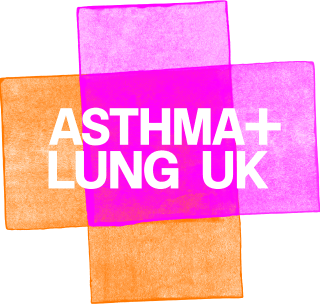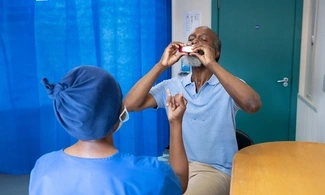In response to the publication of the new 10-year health plan for the NHS, Sarah Sleet, Chief Executive at Asthma + Lung UK, said:
“The new 10-year health plan is a significant milestone for the NHS and the health of the nation. We welcome the government’s commitment to tackling health inequalities and improving neighbourhood health which has the potential to change the lives of 12 million people living with lung conditions.1 But as we turn to implementation, it’s vital that we tackle the UK’s appalling record on respiratory disease.
“It’s very disappointing that there is no acknowledgement of the role of lung disease driving the biggest gap in health inequalities of all the major conditions. We need the same commitment to tackle lung health as shown for other major conditions like heart disease and cancer. Without it, the government will miss their opportunity to close the biggest health inequality gap of all.
“The UK has the worst death rate and highest levels of disability associated with lung disease in Europe. Preventable asthma deaths are rising, emergency admissions for lung conditions are increasing, and only half of local healthcare systems in England are able to meet demand for diagnosing lung conditions.2,3,4,5,6 All this is piling pressure on a NHS under strain. What we need now is a dedicated national respiratory framework and clear accountability for delivery.”
References
1. International Respiratory Coalition. Accessed here.
2. Eurostat. Causes of death – standardised death rate by region of residence 2011.2018. 2023. Accessed here.
3. World Health Organization and European Respiratory Society: Chronic respiratory diseases and health equity by 2050.
4. Data via Office for National Statistics (ONS), National Records of Scotland and Northern Ireland Statistics and Research Agency (NISRA). Figure used is the 5-year average of asthma (ICD-10 code: J45-46) deaths 2014-2022. 2014-2022 saw a 23.7% increase in asthma deaths in the UK.
| England | Northern Ireland | Scotland | Wales | UK | 5 year average | |
|
2010 |
963 |
34 |
91 |
63 |
1,151 |
|
|
2011 |
974 |
33 |
94 |
55 |
1,156 |
|
|
2012 |
1068 |
31 |
89 |
67 |
1,255 |
|
|
2013 |
1,037 |
35 |
105 |
72 |
1,249 |
|
|
2014 |
1,114 |
30 |
72 |
65 |
1,281 |
1218 |
|
2015 |
1,302 |
44 |
122 |
77 |
1,545 |
1297 |
|
2016 |
1,237 |
39 |
133 |
64 |
1,473 |
1361 |
|
2017 |
1,320 |
37 |
126 |
82 |
1,565 |
1423 |
|
2018 |
1,422 |
48 |
114 |
84 |
1,668 |
1506 |
|
2019 |
1,280 |
42 |
98 |
74 |
1,494 |
1549 |
|
2020 |
1,336 |
33 |
113 |
76 |
1,558 |
1552 |
|
2021 |
1,146 |
35 |
96 |
75 |
1,352 |
1527 |
|
2022 |
1,236 |
40 |
111 |
78 |
1,465 |
1507 |
5. In 2023/24, there were 42,050 A&E attendances in which the patient had attended A&E 5 times or more within the year. This is a 22.8% increase on the 2022/23 figure of 34,245 5+ A&E attendances. NHS England Hospital Episode Statistics database 2024.
6. Asthma + Lung UK ICS Respiratory Review survey, October 2024 - 16 out of the 27 ICSs who are commissioning spirometry across the whole system responded to say they did not have enough spirometry testing capacity to meet the demand in their area.







